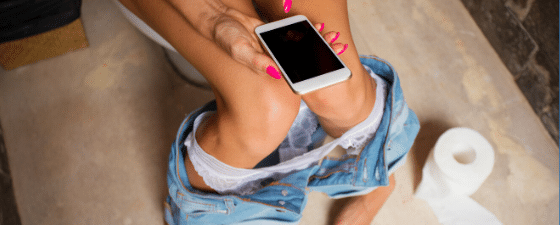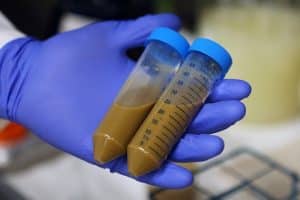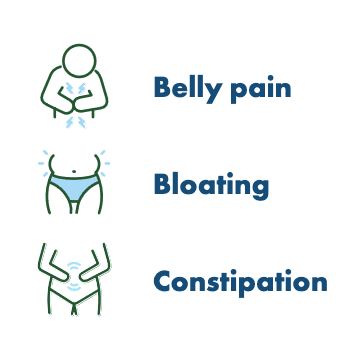Duke University Researchers Seek “Stool Selfies” for Science: Smart Toilet in Works to Automatically ID Bowel Movements
Duke University researchers are seeking to collect 10,000 “stool selfies”for a scientific study in order to develop a “smart toilet” that would automatically identify the physical characteristics of a bowel movement (e.g. consistency and color). These characteristics can help diagnose and manage chronic GI conditions and infections and can be an early warning sign of a serious health condition.
A key component of developing the Duke Smart Toilet is creating the method (algorithm) to automatically categorize human feces from images as a means of advancing individual and community health. But in order to develop the algorithm, the researchers need images of all kinds of human feces. A LOT of images. Everybody is different and these differences will ensure a robust algorithm.
So if you are over the age of 18 and a resident of the United States, and would like to advance this scientific research, please upload a “stool selfie” (photo of your poop in a toilet bowl) to Duke’s secure servers. Don’t worry. All submissions will be anonymous and you can submit as many times as you like.
Here are some fast facts about the study from Sonia Grego, Associate Research Professor of Electrical and Computer Engineering and Dr. Deborah Fisher, Associate Director for Gastroenterology Research at the Duke Clinical Research Institute.

Why is this study important?
The study is important for several reasons.
- The physical characteristics of stool (e.g. consistency and color) can contribute to the diagnosis and management of GI conditions and infections and can be an early warning of trouble.
- People with chronic GI disease often need to track the appearance/frequency of their bowel movements with paper-based diaries or phone apps. However self-tracking (paper diaries, apps) is burdensome, subjective and may not be standardized or accurate.
- We are developing a Smart Toilet designed to automatically identify a bowel movement every time a person uses the toilet.
- The Duke Smart Toilet is designed so that users will be comfortable using this technology and will use the toilet as they have always done; users will not have to take any action and there will not be cameras around the toilet bowl. All data will be captured in the pipes after the toilet has been flushed.
- The Duke Smart Toilet will be an intelligent system: it will recognize a user by a fingerprint on the toilet flush. It will “learn” the health baseline of each individual and flag when data of concern is collected, which will be defined as a deviation from normal that may warrant consulting a doctor or changing elements of lifestyle.
- We are developing this intelligent software at the same time as we are developing the hardware for the system. To develop an artificial intelligence algorithm, we need a large database of images to teach a computer how to classify all the different types of stools.
- For the algorithm to be as accurate as a clinician would be, it needs to be trained on thousands of different images. There is no available database of such images. For as many images as GI doctors see, images need permission from the donor to be used for research. So, we are asking the public to volunteer for this project.
What patients should know about their participation–why it is important/valuable?

Sonia Grego, PhD, Duke University
- People often think of their poop as waste; this is a chance for that misconception to be challenged and for participants to be a part of Citizen Science.
- This is an opportunity for people to participate in the development of a technology that will one day soon be available to identify illness and disease at its earliest stages, thereby accelerating treatment and improving outcomes.
- The team hopes to collect 10,000 images, which is a goal we can reach if a large number of people participate and participate repeatedly.
- This is a Duke University research study jointly coordinated by Sonia Grego, Associate research professor of Electrical and Computer Engineering (Twitter @SoniaGregoDuke) and Dr. Deborah Fisher, Associate Director for Gastroenterology Research at the Duke Clinical Research Institute (Twitter @DrDeborahFisher).
- In order to have a robust algorithm is it vitally important that we receive images of all kinds of stool. We need images ranging from constipation to diarrhea and of all color and streaks, so don’t be shy.
- The submission process is fast, easy and anonymous. Participants can access the study terms and the link to upload images here.
What happens after all the pics are collected?
- Pictures taken with a cell phone may contain indirectly identifiable information such as GPS coordinates of where the picture was taken. The research team does not need nor want this information. The first step is that the pictures will go through a process to remove this information. The uploaded images will be stored securely on Duke Box servers. The study team will scrub any private information from all images using “exiftool” and will then delete the original pictures.
- Our research team will be training the machine-learning algorithm this summer against classifications of the images you provide by GI specialists.
- Once the algorithm reaches appropriate accuracy, the algorithm will be deployed as part of the whole system.
- To manage expectations we are probably at least a year away from having a demonstration. We hope the demonstration will be compelling, and that this technology is so valuable that this research will turn into a product.
What providers should know
- Full study details can be found on the Smart Toilet website here.
- Please encourage your patients to participate. Our goal is to collect 10,000 images. The Duke team is available to answer any questions and can be reached via email at washaid@duke.edu.
- And please follow the Duke team’s ongoing research. Twitter (@DukeWaSHAID, @Duke_GI_); on LinkedIn (Duke University Center for WaSH-AID); and on the web (smarttoilet.pratt.duke.edu)
Listen to our
latest Podcast!







